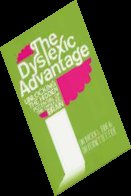articles/Dyslexics/dyslexics-page1
Resolution for Dyslexics by Mike McNamee - part 1 of 1 2 3 4 5
by Mike McNamee Published 01/12/2013

A seemingly abnormal number of photographers have trouble with numbers and this seems to spread to a number who also have trouble getting their heads around image resolution.
On reflection this is, perhaps, not surprising. It is known that dyslexia is prevalent amongst creatives (see call-out box) and it is also true that a large percentage of dyslexics also have dyscalculia - dyslexia with numbers. This might then be the root cause of why we receive so many submissions at incorrect resolution. The purpose of this feature, then, is to try to assist anybody who is confused by numbers, ironically recognising that they also might have trouble reading the article as well! The topic also broadens into the generalisation that the dyslexic brain is demonstrably better at many 3-D spatial tasks, leading many to follow career paths into engineering, architecture, graphic design, photography and other highly visual pursuits. Generally, but not always, reading,
writing and spelling of these higher functioning, spatially aware people is poor, hence the opening sentence. As a result, this article is not just about resolution but about dyslexia, why it occurs and how it manifests itself - it might, in passing, explain to some people why they have ended up members of The Societies in the first place!
Turkeys and Crows
Researching this article we came across the work of Doctors Brock and Fernette Eide who are specialists in dyslexia. In one of their talks they divide people who are learning skills into two types, which they call turkeys and crows. Real turkeys, when confronted with an alarm call from their chicks, instantly gather the chicks together under a protective wing. They do this instantly and automatically, no delays are introduced thinking about consequences or options. Indeed the process is so ingrained that if a polecat (a sworn enemy of turkeys) is equipped with a sound emitter making chick distress calls, the turkey runs to it and tries to gather the pole cat under her wing. This is an entirely satisfactory evolutionary trait, for no polecat has yet been observed mimicking alarm calls to draw a turkey close! This same type of instant reaction is displayed by blackbirds. Blackbirds respond with alarm to the sight of an owl. However, they respond identically to a pair of glass marbles stuck on the end of a stick, it does not have to be a very realistic owl to get the automatic 'turkey' response.
Against these automatic, turkey responses the Eides pitch their 'Crows'. The real (feathered) crow is highly intelligent and, apart from man, one of the only species that can employ 'tertiary tool tactics' - that is it can fashion a tool for a specific job. They show a crow attempting to use a piece of wire to extract a small 'bucket' of food from a deep glass cylinder.
It can't get the bucket up out of the jar with the straight wire. However, after a couple of seconds the crow holds the wire in its feet and then bends a hook onto it with its beak. It then goes straight back to the jar and uses the bent wire (by now a tertiary device) to lift out the bucket of food.
This then is the basis of the Eides' proposition. Turkeys learn by rote and are good at structured learning, following recipes, etc. Crows are broadthinking mavericks who come up with creative ideas that others fail to generate. Dyslexics are generally crow types.
The Michael Gove idea of schooling (and don't get me started!) is based almost exclusively around turkeys. SATS, numbers and performance tables rule, children are coached how to think, how to maximise their exam scores and then these are marked and categorised by turkey-friendly scoring and league tables. This tends to starve the crows, leaving the Richard Bransons, Alan Sugars and Norman Fosters out in the cold with little desire to do anything other than vacate the learning establishment and get on with being creative/making money. It is the same outlook that leads turkeys like Gove to favour national curricula devoid of any creative activities (and the irony of the dual meaning of 'turkeys' is not lost on us!). One of the things mentioned by the Eides is the college of surgeons lamenting the lack of creative thinking, pioneering young doctors in their speciality. The pressure on selection for places at medical school is such that they screen candidates by turkey-like methodology eliminating all but those who score 100% in achievement tests and rote-based examination models, and guess what they end up with, too many turkey doctors and no crows pushing the walls of the box to get out? This branch of medicine, in particular, demands the ability to think quickly and creatively in unusual and sometimes unforeseen circumstances - this is one of the things that pioneers in medicine do.
So if you have fallen into photography because you didn't 'get on' at school, take heart, you might well be a better, more creative photographer for it with your dyslexic, right-hemisphered thought processes. Leave the resolution sums and magazine-writing to us turkeys!
You are currently on page 1
- Resolution for Dyslexics by Mike McNamee page 1
- Resolution for Dyslexics by Mike McNamee page 2
- Resolution for Dyslexics by Mike McNamee page 3
- Resolution for Dyslexics by Mike McNamee page 4
- Resolution for Dyslexics by Mike McNamee page 5
1st Published 01/12/2013
last update 21/07/2022 08:46:24
More Dyslexics Articles
There are 28 days to get ready for The Society of Photographers Convention and Trade Show at The Novotel London West, Hammersmith ...
which starts on Wednesday 14th January 2026










